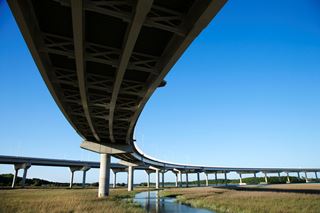
The following is a release from the U.S. Department of Commerce:
U.S. Secretary of Commerce Wilbur Ross presented Indianapolis-based Hoosier Gasket Corporation with the 2017 President’s “E” Award for Exports at a ceremony in Washington, D.C., on May 22. The President’s “E” Award is the highest recognition any U.S. entity can receive for making a significant contribution to the expansion of U.S. exports.
“Hoosier Gasket has demonstrated a sustained commitment to export expansion. The “E” Award Committee was very impressed with Hoosier Gasket’s growth in employment directly tied to exports,” said Secretary Ross in his congratulatory letter to the company announcing its selection.
Hoosier Gasket Corporation is a designer and manufacturer of high quality gaskets and seals for automotive, construction, agriculture, marine, power generation and other industries.
“Exporting is an important and growing part of our business, with exports now accounting for 15% of our total sales and supporting 15% of the 140 jobs in our Indianapolis headquarters,” said Oleg Gostomelsky, vice president at Hoosier Gasket Corporation. “Buyers and consumers in foreign markets want quality products made in the United States, and we are very honored to receive the ‘E’ Award.”
In total, Secretary Ross honored 32 U.S. companies and organizations from across the country with the President’s “E” Award for their role in strengthening the U.S. economy by sharing American ingenuity outside of our borders.
U.S. companies are nominated for the “E” Awards through the U.S. Commercial Service, part of the Department’s International Trade Administration. With offices across the United States and in embassies and consulates around the world, the International Trade Administration lends its expertise at every state of the exporting process by promoting and facilitating exports and investment into the United States; administering anti-dumping and countervailing duties orders; and removing, reducing or preventing foreign trade barriers.
U.S. exports totaled $2.21 trillion in 2016, accounting for nearly 12% of U.S. gross domestic product. Exports supported an estimated 11.5 million jobs nationwide in 2015, according to the International Trade Administration.




 The
The  The current federal funding stream for highways runs its course July 31. The Senate is looking at a four-year option, while the House appears more in favor of extending it through this year and soon revisiting the matter.
The current federal funding stream for highways runs its course July 31. The Senate is looking at a four-year option, while the House appears more in favor of extending it through this year and soon revisiting the matter.
 Federal highway funding is running low. Nothing new there. The Indiana Chamber, and many others, have called for long-term solutions from Washington instead of short-term fixes that simply extend the uncertainty.
Federal highway funding is running low. Nothing new there. The Indiana Chamber, and many others, have called for long-term solutions from Washington instead of short-term fixes that simply extend the uncertainty. The Keystone XL Pipeline bill was narrowly defeated Tuesday in the U.S. Senate. Indiana Chamber of Commerce President and CEO Kevin Brinegar offers his thoughts on the policy and the latest activity in Washington:
The Keystone XL Pipeline bill was narrowly defeated Tuesday in the U.S. Senate. Indiana Chamber of Commerce President and CEO Kevin Brinegar offers his thoughts on the policy and the latest activity in Washington: I love traveling. In fact, I am infatuated with traveling.
I love traveling. In fact, I am infatuated with traveling.